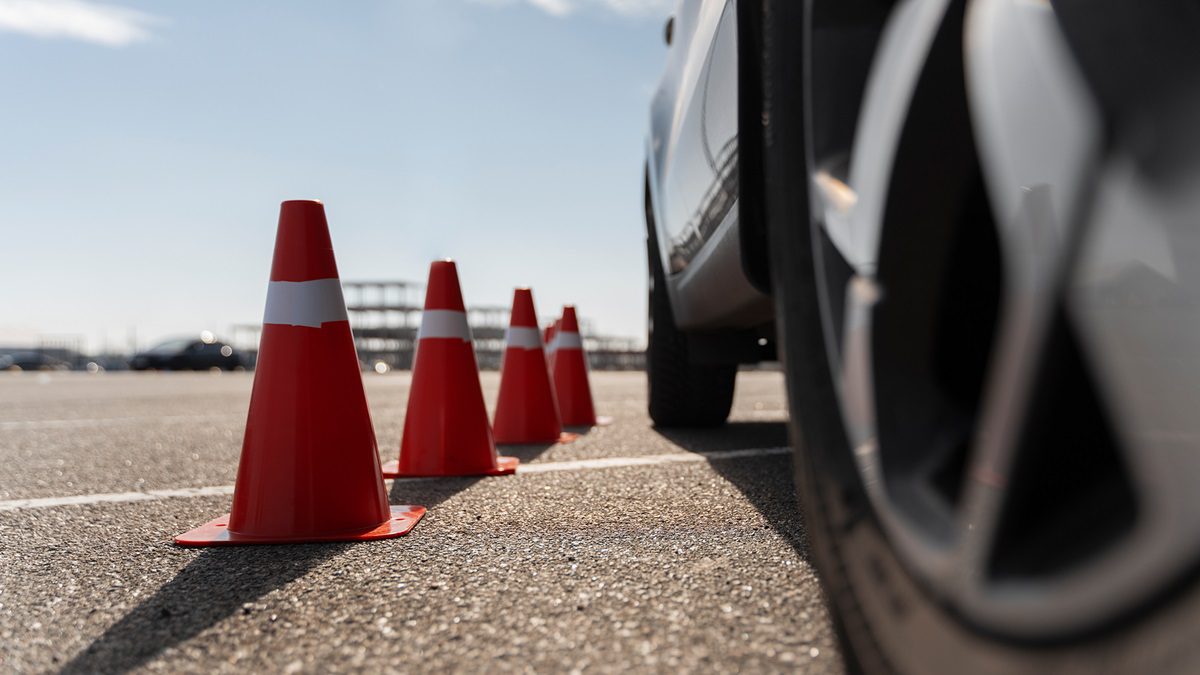Spring Driving Hazards and Tips to Stay Safe on the Road


As winter fades and spring emerges, drivers often feel a renewed sense of freedom on the road. However, this season brings unique challenges that can compromise safety. Understanding spring driving hazards is crucial for all motorists.
One of the best ways to ensure spring car safety is to recognize the most common risks and take proactive steps to prepare your vehicle. From unpredictable weather to road conditions impacted by winter damage, being prepared will help keep you safe on the road.
What Are Common Spring Driving Hazards?
Spring introduces specific hazards that drivers must be aware of to maintain safety.
- Wet Roads: Increased rainfall leads to slick surfaces, reducing tire traction and increasing stopping distances.
- Pothole Damage: Winter’s freeze-thaw cycles often result in potholes, which can cause tire blowouts or misalignment.
- Increased Wildlife Activity: Animals become more active during spring, leading to unexpected road crossings.
- More Cyclists and Pedestrians: Warmer weather encourages outdoor activities, increasing the presence of cyclists and pedestrians near roadways.
To improve spring car safety, always stay alert, adjust your speed, and anticipate road conditions before heading out.
How Can I Ensure My Car Is Safe for Spring Driving?
Preparing your vehicle for spring is essential to navigate seasonal hazards effectively.
- Inspect Tires: Ensure tires have adequate tread depth and are properly inflated to handle wet roads.
- Check Brakes: Functional brakes are vital, especially on slick surfaces. Listen for unusual noises indicating wear.
- Replace Wiper Blades: Clear visibility during spring showers is crucial; ensure wipers are in good condition.
- Test Lights: Verify that all headlights, taillights, and turn signals are operational for safe driving in varying conditions.
- Monitor Fluid Levels: Maintain appropriate levels of oil, coolant, and windshield washer fluid to ensure optimal vehicle performance.
Regular inspections will keep your vehicle in peak condition and minimize spring driving hazards.
Essential Spring Driving Tips for a Safer Journey
Handling spring driving hazards requires not only vehicle preparedness but also strategic driving habits. The road conditions change quickly due to fluctuating temperatures, sudden rain showers, and increased traffic from pedestrians and cyclists. Below are crucial tips to help you stay safe while driving this season.
1. Adjust Your Driving for Wet Roads
Spring rain can create wet roads that significantly reduce traction, leading to hydroplaning or skidding. Here’s how to maintain control:
- Reduce speed during rainstorms to allow more time for braking and maneuvering.
- Increase the following distance to give yourself more reaction time in case of sudden stops.
- Avoid sudden braking or sharp turns on wet roads to prevent losing traction.
- Use headlights during heavy rain to improve visibility for you and other drivers.
By staying cautious and adjusting your driving habits, you can navigate spring driving hazards more safely.
2. Watch Out for Pothole Damage
Winter’s freeze-thaw cycle wreaks havoc on roads, causing potholes that pose serious risks. Pothole damage can lead to:
- Flat tires or bent rims, especially if you hit a deep pothole at high speed.
- Wheel misalignment, which affects your car’s stability and fuel efficiency.
- Suspension and undercarriage damage, leading to costly repairs.
To minimize pothole damage, follow these tips:
- Scan the road ahead to identify and avoid potholes.
- Keep tires properly inflated to absorb impact better.
- Slow down when approaching potholes, but don’t brake suddenly, as this can worsen the impact.
- Have your alignment checked if you hit a major pothole, as it can throw off your steering control.
Regular road awareness and proper vehicle maintenance will help mitigate pothole damage and keep your car in top shape.
3. Be Mindful of Increased Wildlife and Pedestrians
As the weather warms up, expect more activity from both animals and people near roads. Here’s what you should do:
- Stay alert in wooded or rural areas, especially at dawn and dusk when animals are most active.
- Slow down near parks, schools, and neighborhoods, as more pedestrians and cyclists will be on the streets.
- Use your horn if necessary to warn wildlife before they cross the road.
- Keep your windshield clean to spot unexpected movements early.
Being aware of your surroundings will help you react in time and avoid accidents involving pedestrians or animals.
4. Prepare for Sudden Fog and Reduced Visibility
Spring mornings often bring thick fog, which can drastically reduce visibility and make it difficult to see other vehicles, pedestrians, and road signs. Driving in fog requires extra caution to prevent accidents.
How to drive safely in foggy conditions:
- Use low-beam headlights or fog lights to improve visibility. High beams can reflect off fog and make it harder to see.
- Reduce your speed and increase your following distance to allow more reaction time.
- Listen for traffic around you rather than relying solely on sight. Other drivers may not be as cautious.
- Avoid sudden lane changes and always signal well in advance to alert other drivers.
If visibility becomes dangerously low, pull over in a safe location and wait for the fog to clear. Proper caution will help you avoid accidents caused by poor visibility.
5. Watch for Road Construction and Detours
Spring is peak time for road repairs, meaning more detours, lane closures, and construction zones. Navigating through these areas requires patience and heightened awareness.
How to safely drive in construction zones:
- Follow posted speed limits, as fines for speeding in work zones are often higher.
- Stay in your lane and avoid unnecessary lane changes, which can lead to collisions.
- Watch for workers and heavy machinery entering or exiting the roadway.
- Plan your route ahead of time to account for possible delays or detours.
By staying alert and adapting to changing road conditions, you can avoid accidents and frustration while driving through construction zones.
Spring Road Conditions and How to Handle Them
Spring driving can be unpredictable due to rapid weather shifts, melting snow runoff, and increased road maintenance projects. Being prepared for these spring driving hazards ensures a smoother and safer ride.
1. How to Drive Safely on Wet Roads and Puddles
Spring showers may bring flowers, but they also bring wet roads, which can be treacherous if you’re not careful. Water buildup on the roads can lead to hydroplaning, where your tires lose contact with the pavement, making steering and braking difficult.
Here’s how to stay safe:
- Drive at a moderate speed to maintain tire traction.
- Avoid sudden braking or acceleration, which can cause skidding.
- Steer into a skid if hydroplaning occurs, rather than overcorrecting.
- Check tire tread depth, as worn tires reduce grip on wet roads.
If you encounter standing water, slow down. Driving too fast through puddles can send water into your engine, causing expensive damage.
2. Navigating Construction Zones and Road Work Areas
Spring is prime time for road repairs, which means more construction zones, detours, and traffic congestion. Road work areas can be hazardous due to sudden lane shifts and uneven surfaces.
To drive safely in construction zones:
- Follow posted speed limits, as fines for speeding in these areas are often higher.
- Stay in your lane, avoiding unnecessary lane changes that can cause accidents.
- Be cautious of workers and equipment entering the roadway.
- Plan extra travel time, as detours and delays are common.
Patience and alertness will help you navigate road construction safely.
3. The Dangers of Spring Fog and How to Drive in It
Spring mornings often bring thick fog, reducing visibility and making it harder to judge distances between vehicles.
To handle foggy conditions:
- Use low-beam headlights or fog lights to increase visibility.
- Avoid using high beams, as they reflect off the fog and worsen visibility.
- Slow down to adjust for reduced sight distance.
- Listen for traffic around you, as sound becomes more important in low-visibility conditions.
If the fog is too dense, pull over in a safe area until conditions improve.
4. Watch for Wildlife on the Move
Spring marks an increase in wildlife activity as animals come out of hibernation or begin migrating. Deer, raccoons, and other animals are more likely to cross roads during early morning or evening hours.
To stay safe:
- Stay alert in wooded or rural areas, especially near dawn or dusk.
- Use high beams when appropriate to better spot animals at a distance.
- Slow down in areas marked with wildlife crossing signs.
- Avoid swerving sharply if an animal appears, brake firmly, and stay in your lane.
- Keep your eyes scanning ahead for movement along the roadside.
Spring roads come with their share of challenges, but being proactive helps you handle them with confidence. With the right preparation and awareness, you can enjoy smoother, safer drives all season long.
Stay Prepared for Spring Driving Hazards
Spring roads bring unique challenges, from wet roads and pothole damage to fog and construction zones. Staying alert, adjusting your driving habits, and keeping up with vehicle maintenance will ensure a safer ride. As the weather shifts, taking proactive steps will help you navigate seasonal hazards with confidence. Keeping spring car safety in mind will allow you to drive with greater security and peace of mind.
For those in Illinois, HEART Auto Care offers expert vehicle maintenance and repair services to keep your car in peak condition. Schedule a service today to prepare your car for spring. Need assistance? Contact us for expert auto care tailored to your needs.










